2023年(新课标Ⅰ卷)高考英语试卷+答案+听力录音
2023年普通高等学校招生全国统一考试(新课标全国Ⅰ卷)
第一部分 听力(1-20小题)在笔试结束后进行。(共5小题; 每小题1.5分, 满分7.5分)
听下面5段对话。每段对话后有一个小题, 从题中所给的A、B、C三个选项中选出最佳选项。听完每段对话后, 你都有10秒钟的时间来回答有关小题和阅读下一小题。每段对话仅读一遍。
【此处可播放相关音频,请去附件查看】
篇幅有限,只展示部分,更多请直接下载文件,可编辑可打印可下载
(符号和图片难以展示)
第二部分 阅读(共两节,满分50分)
第一节 (共15小题;每小题2.5分,满分37.5分)
阅读下列短文,从每题所给的A、B、C、D四个选项中选出最佳选项。
A
Bike Rental & Guided Tours
Welcome to Amsterdam, welcome to MacBike. You see much more from the seat of a bike! Cycling is the most economical, sustainable and fun way to explore the city, with its beautiful canals, parks, squares and countless lights. You can also bike along lovely landscapes outside of Amsterdam.
Why MacBike
MacBike has been around for almost 30 years and is the biggest bicycle rental company in Amsterdam. With over 2,500 bikes stored in our five rental shops at strategic locations, we make sure there is always a bike available for you. We offer the newest bicycles in a wide variety, including basic bikes with foot brake (刹车), bikes with hand brake and gears (排挡), bikes with child seats, and children’s bikes.
Prices
|
| Hand Brake, Three Gears | Foot Brake, No Gears |
| 1 hour | €7.50 | €5.00 |
| 3 hours | €11.00 | €7.50 |
| 1 day (24 hours) | €14.75 | €9.75 |
| Each additional day | €8.00 | €6.00 |
Guided City Tours
The 2.5-hour tour covers the Gooyer Windmill, the Skinny Bridge, the Rijksmuseum, Heineken Brewery and much more. The tour departs from Dam Square every hour on the hour, starting at 1:00 pm every day. You can buy your ticket in a MacBike shop or book online.
21. What is an advantage of MacBike?
A. It gives children a discount. B. It offers many types of bikes.
C. It organizes free cycle tours. D. It has over 2,500 rental shops.
22. How much do you pay for renting a bike with hand brake and three gears for two days?
A. €15.75. B. €19.50. C. €22.75. D. €29.50.
23. Where does the guided city tour start?
A. The Gooyer, Windmill. B. The Skinny Bridge.
C. Heineken Brewery. D. Dam Square.
B
When John Todd was a child, he loved to explore the woods around his house, observing how nature solved problems. A dirty stream, for example, often became clear after flowing through plants and along rocks where tiny creatures lived. When he got older, John started to wonder if this process could be used to clean up the messes people were making.
After studying agriculture, medicine, and fisheries in college, John went back to observing nature and asking questions. Why can certain plants trap harmful bacteria (细菌)? Which kinds of fish can eat cancer-causing chemicals? With the right combination of animals and plants, he figured, maybe he could clean up waste the way nature did. He decided to build what he would later call an eco-machine.
The task John set for himself was to remove harmful substances from some sludge (污泥). First, he constructed a series of clear fiberglass tanks connected to each other. Then he went around to local ponds and streams and brought back some plants and animals. He placed them in the tanks and waited. Little by little, these different kinds of life got used to one another and formed their own ecosystem. After a few weeks, John added the sludge.
He was amazed at the results. The plants and animals in the eco-machine took the sludge as food and began to eat it! Within weeks, it had all been digested, and all that was left was pure water.
Over the years, John has taken on many big jobs. He developed a greenhouse — like facility that treated sewage (污水) from 1,600 homes in South Burlington. He also designed an eco-machine to clean canal water in Fuzhou, a city in southeast China.
“Ecological design” is the name John gives to what he does. “Life on Earth is kind of a box of spare parts for the inventor,” he says. “You put organisms in new relationships and observe what’s happening. Then you let these new systems develop their own ways to self-repair.”
24. What can we learn about John from the first two paragraphs?
A. He was fond of traveling. B. He enjoyed being alone.
C. He had an inquiring mind. D. He longed to be a doctor.
25. Why did John put the sludge into the tanks?
A. To feed the animals. B. To build an ecosystem.
C. To protect the plants. D. To test the eco-machine.
26. What is the author’s purpose in mentioning Fuzhou?
A. To review John’s research plans. B. To show an application of John’s idea.
C. To compare John’s different jobs. D. To erase doubts about John’s invention.
27. What is the basis for John’s work?
A. Nature can repair itself. B. Organisms need water to survive.
C. Life on Earth is diverse. D. Most tiny creatures live in groups.
C
The goal of this book is to make the case for digital minimalism, including a detailed exploration of what it asks and why it works, and then to teach you how to adopt this philosophy if you decide it’s right for you.
To do so, I divided the book into two parts. In part one, I describe the philosophical foundations of digital minimalism, starting with an examination of the forces that are making so many people’s digital lives increasingly intolerable, before moving on to a detailed discussion of the digital minimalism philosophy.
Part one concludes by introducing my suggested method for adopting this philosophy: the digital declutter. This process requires you to step away from optional online activities for thirty days. At the end of the thirty days, you will then add back a small number of carefully chosen online activities that you believe will provide massive benefits to the things you value.
In the final chapter of part one, I’ll guide you through carrying out your own digital declutter. In doing so, I’ll draw on an experiment I ran in 2018 in which over 1,600 people agreed to perform a digital declutter. You’ll hear these participants’ stories and learn what strategies worked well for them, and what traps they encountered that you should avoid.
The second part of this book takes a closer look at some ideas that will help you cultivate (培养) a sustainable digital minimalism lifestyle. In these chapters, I examine issues such as the importance of solitude (独处) and the necessity of cultivating high-quality leisure to replace the time most now spend on mindless device use. Each chapter concludes with a collection of practices, which are designed to help you act on the big ideas of the chapter. You can view these practices as a toolbox meant to aid your efforts to build a minimalist lifestyle that works for your particular circumstances.
28. What is the book aimed at?
A. Teaching critical thinking skills. B. Advocating a simple digital lifestyle.
C. Solving philosophical problems. D. Promoting the use of a digital device.
29. What does the underlined word “declutter” in paragraph 3 mean?
A. Clear-up. B. Add-on. C. Check-in. D. Take-over.
30. What is presented in the final chapter of part one?
A. Theoretical models. B. Statistical methods.
C![]() Practical examples. D. Historical analyses.
Practical examples. D. Historical analyses.
31. What does the author suggest readers do with the practices offered in part two?
A. Use them as needed. B. Recommend them to friends.
C. Evaluate their effects. D. Identify the ideas behind them.
D
On March 7, 1907, the English statistician Francis Galton published a paper which illustrated what has come to be known as the “wisdom of crowds” effect. The experiment of estimation he conducted showed that in some cases, the average of a large number of independent estimates could be quite accurate.
This effect capitalizes on the fact that when people make errors, those errors aren’t always the same. Some people will tend to overestimate, and some to underestimate. When enough of these errors are averaged together, they cancel each other out, resulting in a more accurate estimate. If people are similar and tend to make the same errors, then their errors won’t cancel each other out. In more technical terms, the wisdom of crowds requires that people’s estimates be independent. If for whatever reasons, people’s errors become correlated or dependent, the accuracy of the estimate will go down.
But a new study led by Joaquin Navajas offered an interesting twist (转折) on this classic phenomenon. The key finding of the study was that when crowds were further divided into smaller groups that were allowed to have a discussion, the averages from these groups were more accurate than those from an equal number of independent individuals. For instance, the average obtained from the estimates of four discussion groups of five was significantly more accurate than the average obtained from 20 independent individuals.
In a follow-up study with 100 university students, the researchers tried to get a better sense of what the group members actually did in their discussion. Did they tend to go with those most confident about their estimates? Did they follow those least willing to change their minds? This happened some of the time, but it wasn’t the dominant response. Most frequently, the groups reported that they “shared arguments and reasoned together”. Somehow, these arguments and reasoning resulted in a global reduction in error. Although the studies led by Navajas have limitations and many questions remain, the potential implications for group discussion and decision-making are enormous.
32. What is paragraph 2 of the text mainly about?
A. The methods of estimation. B. The underlying logic of the effect.
C. The causes of people’s errors. D. The design of Galton’s experiment.
33. Navajas’ study found that the average accuracy could increase even if ________.
A. the crowds were relatively small B. there were occasional underestimates
C. individuals did not communicate D. estimates were not fully independent
34. What did the follow-up study focus on?
A. The size of the groups. B. The dominant members.
C. The discussion process. D. The individual estimates.
35. What is the author’s attitude toward Navajas’ studies?
A. Unclear. B. Dismissive. C. Doubtful. D. Approving.
篇幅有限,只展示部分,更多请直接下载文件,可编辑可打印可下载
(符号和图片难以展示)

2023年(新课标Ⅰ卷)高考英语试卷+答案+听力录音
将资源保存下载到电脑
关键词: 2023年新课标Ⅰ卷高考英语试卷,2023年新课标Ⅰ卷高考英语答案,2023年新课标Ⅰ卷高考英语听力录音,新课标Ⅰ卷高考英语
标 签: 2023年新课标Ⅰ卷高考英语试卷,2023年新课标Ⅰ卷高考英语答案,2023年新课标Ⅰ卷高考英语听力录音,新课标Ⅰ卷高考英语
发布日期:2024年07月16日 04:47
更新日期:2024年07月16日
文章分类:2023年,高考,英语
以上整理来自互联网,如有侵权请及时联系我们进行删除
最近更新试卷
-
1、2024年湖北省中考英语真题试卷+答案.docx
-
2、2024年武汉市中考英语真题试卷+答案.docx
-
3、2024年黑龙江省绥化市中考英语真题试卷+答案.docx
-
4、2024年黑龙江省齐齐哈尔市中考英语真题试卷+答案.docx
-
5、2024年黑龙江省龙东地区中考英语真题试卷+答案.docx
-
6、2024年河南省中考英语真题试卷+答案.docx
-
7、2024年河北省中考英语真题试卷+答案.docx
-
8、2024年贵州省中考英语真题试卷+答案.docx
-
9、2023年(辽宁)高考化学试卷真题+答案解析.docx
-
10、2023年(江苏)高考化学试卷真题+答案解析.docx
-
11、2023年(湖南)高考化学试卷真题+答案解析.docx
-
12、2023年(湖北)高考化学试卷真题+答案解析.docx
-
13、2023年(河北)高考化学试卷真题+答案解析.docx
-
14、2023年(海南)高考化学试卷真题+答案解析.docx
-
15、2023年(广东)高考化学试卷真题+答案解析.docx
-
16、2023年(福建)高考化学试卷真题+答案解析.docx
-
17、2023年(北京)高考化学试卷真题+答案解析.docx
-
18、2023年(天津)高考语文试卷真题+答案解析.doc
-
19、【免费】2023年(上海)高考语文春考试卷真题+答案解析.doc
-
20、2023年(上海)高考语文秋考试卷真题+答案解析.doc


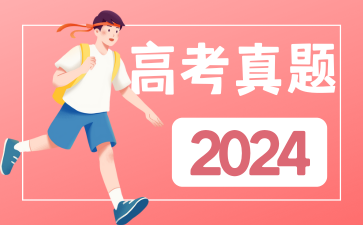 2024年高考真题
2024年高考真题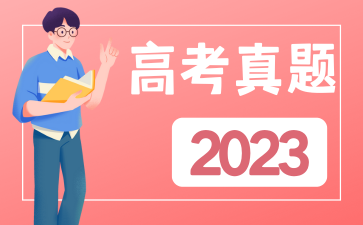 2024年高考真题
2024年高考真题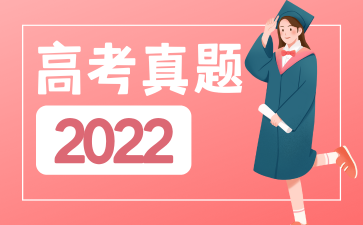 2022年高考真题
2022年高考真题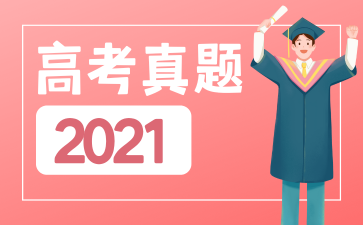 2021年高考真题
2021年高考真题
 家长指南
家长指南 亲子教育
亲子教育 教育动态
教育动态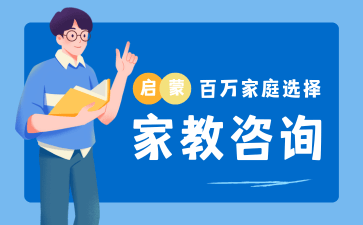 家教咨询
家教咨询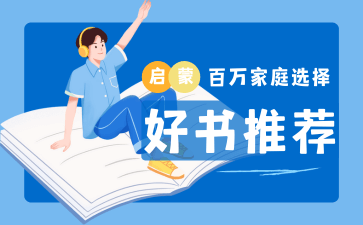 好书推荐
好书推荐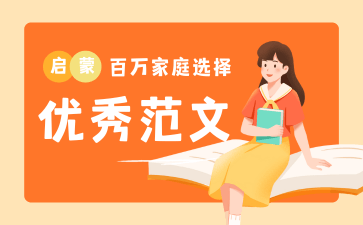 优秀范文
优秀范文